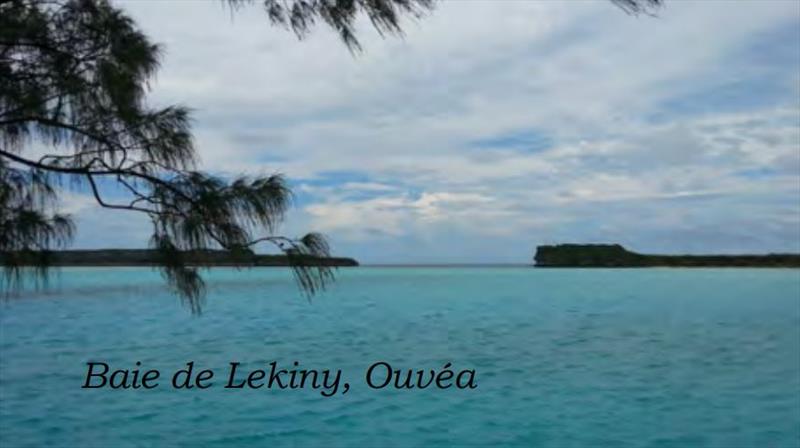
The Loyalty Islands of New Caledonia
by Nigel Richards / Island Cruising NZ 6 Oct 2019 10:06 UTC

Baie de Lekiny, Ouvéa © Island Cruising NZ
The Loyalty Islands are a group of islands and atolls that spread in a one hundred and eighty nautical mile line from the north-west to southeast. They are situated to the east of Grand Terre, the main island of New Caledonia and are an overnight reach in the trades, from Port Vila, New Caledonia.
However, unless you are part of an organised rally you will need to bypass the island group and head to the only clearance port in New Caledonia, Noumea. Then it is a 110nm slog back around the corner to get back to Tadine on Mare, probably the closest point.
What is all the fuss about I hear you ask. These islands are without doubt one of the highlights of a South Pacific adventure; with pure white sand; coral beyond imagination and wildlife in abundance. You can watch blue seagulls soar overhead, their white under feathers reflecting the colour of the water, places where very much the slogan of 'only take away photos and only leave behind footprints' fits perfectly.
But, and there is a but. Some of these beautiful island have a troubled history that occasionally re-surfaces. New Caledonia is a special collectivity of France, with that there are generations of ethnic French born there. However the local indigenous people the Kanak have been there for far longer, with a mixture of Melanesian and Polynesian cultures in the different islands. They even have 38 different local languages, they all speak French though. This mixture of cultures and history sometimes comes to a head with conflict to varying degrees. As recent as the 1980's saw major conflict on the island of Ouvéa with the dramatic 'cave hostage' incident and resulting military response.
Earlier this year there was a flash point in Ouvéa when there was trouble between a vessels' crew and local people. Again, just a few weeks ago, there was violent situation that led to two policemen being seriously injured. These latest situations have created increased tension and that resulted in ICNZ advising the rally participants to avoid the atoll during this years' Pacific Circuit Rally. We are working hard with local contacts to find a way forward to secure safe cruising.
Lets have a look at the history of these beautiful islands and understand the nature of the present day. New Caledonia as a land was sighted by the well known and prolific explorer of the area, James Cook, in 1774. The name derived from its similarity to Scotland. The west coast of Grand Terre was first approached by Comp de Lapérouse in 1788.
The Loyalty Islands were mapped between 1793 and 1796 by English whaling captain William Raven, whilst commanding the Britannia and contracted to the British East India Company. New Caledonia was formally possessed by France under the orders of Napoleon III, by Admiral Febvrier Despointes in 1853. The following year Port of France, now know as Noumea was established. During its time as a penal colony, 1864 to 1897, sum 22,000 criminals were transported there. The largest overseas penitentiary of the French system. In 1864 nickel was found around Mont Panié, the highest peak in New Caledonia at 1,629m, and the river Diahot in the north of Grand Terre.
The mining of this mineral and others now creates the unique topographical views and colours seen today around the mainland as a cruising ground the Loyalty Islands provide an experience unique to the South Pacific. Ovuéa is the only true atoll in New Caledonia, Lifou being a raised atoll, Maré is similar but with a much smaller crater. All of the islands are stunning. The small atoll that sits to the north of Ouvéa, Beautemps Beaupré, being probably one of the most eye catching places on earth. With the advantage of clearances into Drueulu in the Baie de Sandal with Island Cruising NZ, the options then open up to explore these wonderful locations.
An important thing to remember about Kanak society, it has customary authority layers, as do many other countries of the Pacific. There is up to 5000 family based clans around the whole country, these disseminate authority to local tribes headed by grand-chiefs and petit-chiefs. A district will have a grand-chief and village will have a petit-chief.
The petit-chief family is chosen by the district chief and then the role becomes hereditary to that family. When you anchor off a settlement the respectful approach is to find the chief and present a small gift whilst asking permission to explore the area. The traditional "Coutume" would be some fabric along with perhaps a jar of coffee bean or tea. A small monetary offering would be acceptable too. It is a token offering. Following this custom starts you off with a positive relationship and provides you with the basis for a shared experience that you will find hard to beat anywhere.